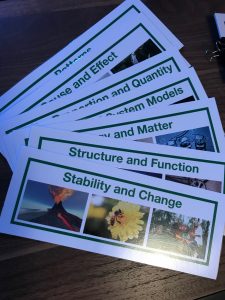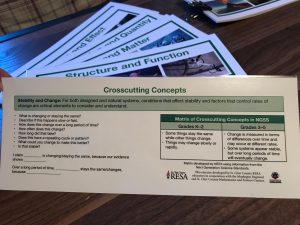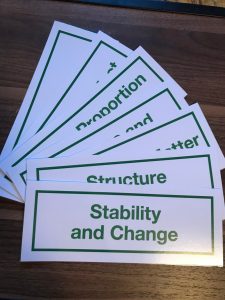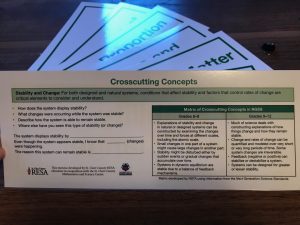Crosscutting Concepts – the “lost” dimension
Teachers are aware that the new science standards are three-dimensional in nature. Each standard is made up of a disciplinary core idea, a science and engineering practice, and a crosscutting concept.
The disciplinary core idea (DCI) is the most familiar dimension to teachers – this is the traditional science content. As educators, we have focused on this science content for years. In most cases, when teachers have been asked about what they are doing in science, the answer has come in the form of explaining the content. Typical responses to that question might have been: “We are studying kinetic and potential energy.” or “We are learning about weather.”
The science and engineering practices (SEP) are not really new – but this is the first time that teachers are experiencing these practices as a part of the science standards. This moves these practices from simply being “good practice” in science to being a vital part of meeting the standard. The SEPs are the doing of science – the practices that scientists engage in as they do their work. You can read more about the practices at each grade band by visiting the SEP progression document.
And then comes the Crosscutting Concepts. This dimension has been the toughest to really wrap our brains around, even though it has been a part of previous standards. The crosscutting concepts have gone by other names in past – in they have been called “themes” (Science for All Americans -AAA 1989) and “unifying principles” (National Science Education Standards-1996) but as a part of these standards, being explicit with these concepts was not emphasized. (source: Appendix G, Next Generation Science Standards)
The crosscutting concepts (CCC) are designed to provide connections between the various domains of science but also can serve to connect to other curricular areas as well. The 7 crosscutting concepts are:
- Patterns
- Cause and effect
- Scale, proportion, and quantity
- Systems and system models
- Energy and matter: Flows, cycles, and conservation
- Structure and function
- Stability and change
While teachers may know the CCCs, they might struggle with how to make them explicit for students. If this is how you are feeling, then be sure to check out the wonderful resource linked below – CCC cards for both elementary and secondary. The cards have the CCC printed on the front and guiding question prompts for the teacher printed on the back. Also found on the back would be the CCC progressions for the grade bands. The teacher could easily carry the card around during the lesson providing both a visual reminder to the students of the CCC as well as guidance for the teacher.
Check out the cards below and feel free to use the linked file to print a set for your classroom. Don’t forget that Central Rivers AEA Creative Services can print and laminate these cards for you as well!
Let’s prevent the CCC from becoming “the lost dimension.”




 Reach out to the author – Mandie Sanderman, Central Rivers AEA Science Consultant
Reach out to the author – Mandie Sanderman, Central Rivers AEA Science Consultant
